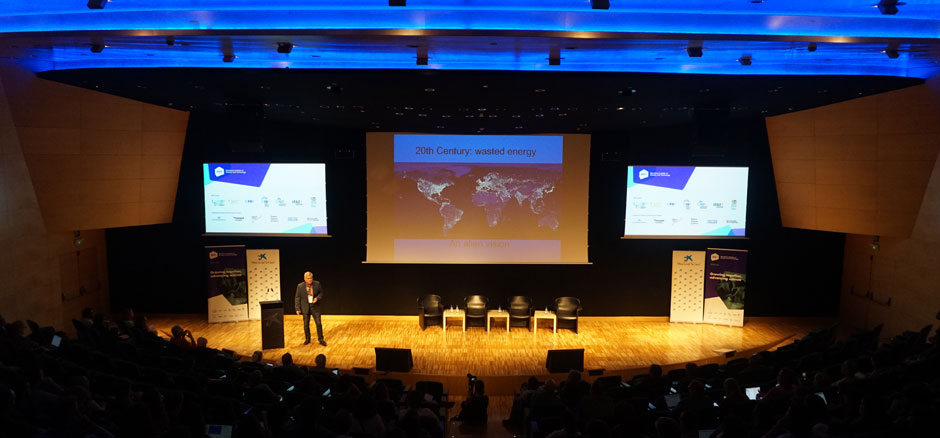BIST Director General says modernising research facilities and providing training to boost the social impact of science are the top priorities of the Barcelona Institute of Science and Technology. The event, held at CosmoCaixa, offers an overview about several transversal research issues being tackled by the BIST institutions.

Gabby Silberman, director general of the Barcelona Institute of Science and Technology, took advantage of his speech welcoming the more than 300 researchers participating in the BIST annual conference to call for a funding model that ensures periodic renovation of scientific facilities "that are essential to doing competitive science" and to highlight the need for training that prepares postdoc researchers to play a more active role beyond the lab.
The event, held at CosmoCaixa, offers an overview about several transversal research issues being tackled by the BIST institutions:
Energy re-evolution
Prof. Pedro Gómez-Romero, Group Leader of the Novel Energy-Oriented Materials Group, was among the experts who debated the state of development of what is known as artificial photosynthesis, which separates hydrogen from oxygen in water using chemical catalysts, and the development of new nanomaterials for photovoltaic cells and more efficient energy-storage systems.
Biosensors
The morning finished off with a debate on the latest developments in biosensors for diagnostics, moderated by Prof. Arben Merkoçi, leader of the Nanobioelectronics and Biosensors group at ICN2. The session explained the innovative lines of research under way at the BIST centres, exploring various perspectives for integrating biological materials and nanomaterials to produce new biosensors that are much more sensitive and efficient, which could even fit inside a cell. The debate also covered the research on using quantum dots in new technology for biosensors and explored applications of these new advances to cancer research.
The BIST Conference programme will continue this afternoon with a debate on tissue engineering and modelling, looking at the latest scientific advances in reproducing stem cells in vitro and how developments in genome editing and bioprinting are having an impact on the field of tissue engineering and making it possible to advance in personalised regenerative medicine.
This will be followed by a session presenting the projects from the Ignite Programme, through which BIST promotes the most disruptive interdisciplinary research. Specifically, the session will look at the progress of seven projects (of the 13 funded so far), including 2DNANOHEAT (heat transmission in nanomaterials), presented by Dr. Marianna Sledzinska, from the ICN2 Phononic and Photonic Nanostructures Group; SOLHYCAT (nanotechnology for catalysts for artificial photosynthesis), participated by ICN2 Inorganic Nanoparticles Group led by ICREA Prof. Víctor Puntes; THEIA (new retinal implant to help certain patients see again), participated by the ICN2 Advanced Electronic Materials and Devices Group lead by ICREA Pro. Jose A. Garrido; and INWOC (new catalysts for water hydrolysis and producing hydrogen), participated by ICN2 Advanced Electron Nanoscopy Group led by ICREA Prof. Jordi Arbiol.
Additionally, during the event US scientist Barry C. Barish, 2017 Nobel laureate in Physics with Rainer Weiss and Kip S. Thorne for their contribution to LIGO (Laser Interferometer Gravitational-Wave Observatory) and the observation of gravitational waves, and Marileen Dogterom, chair of the Department of Nanoscience (Kavli Institute) at Delft University of Technology, offered the opening and closing speech of the conference, respectively.
Information via: BIST

